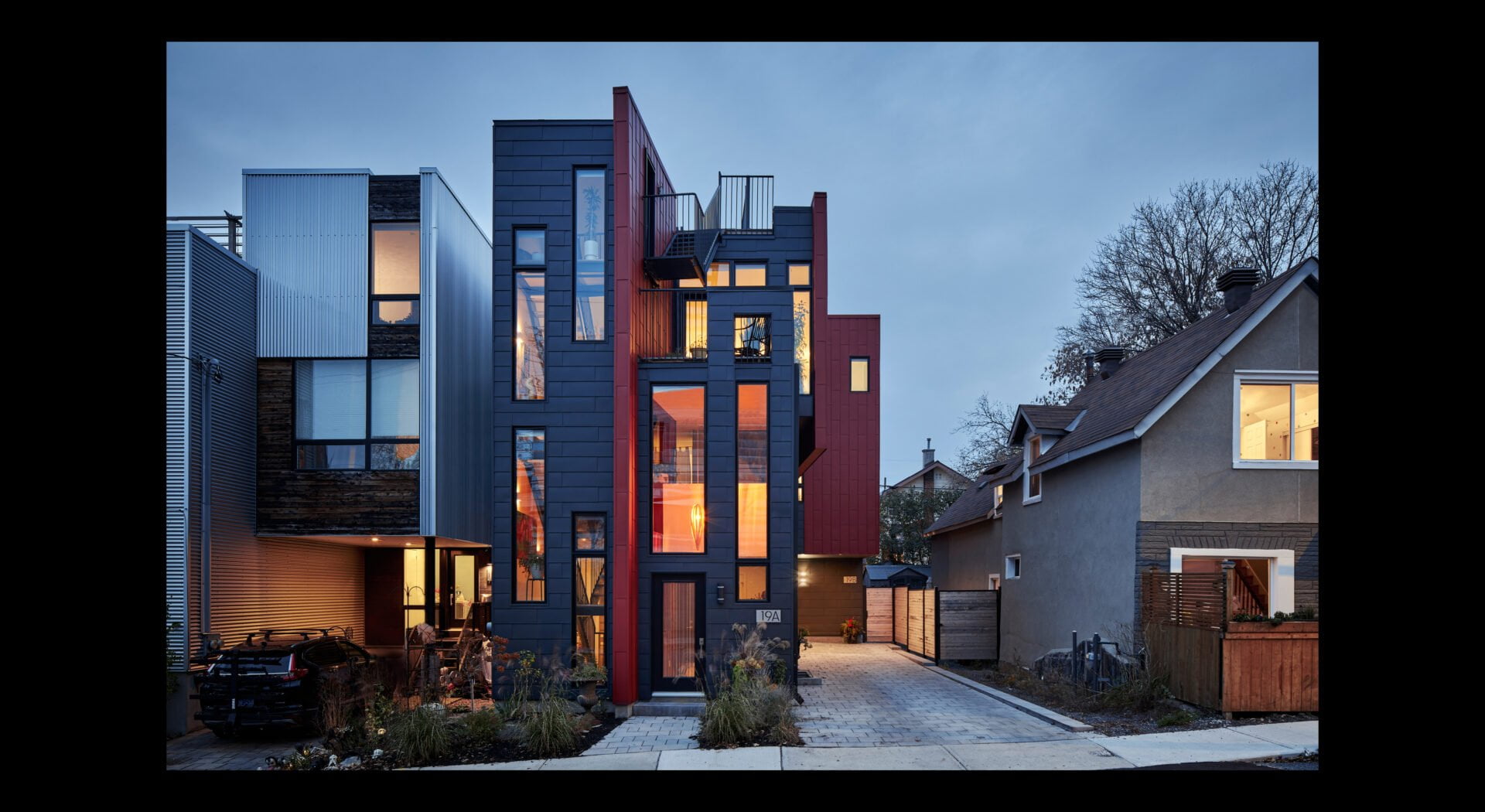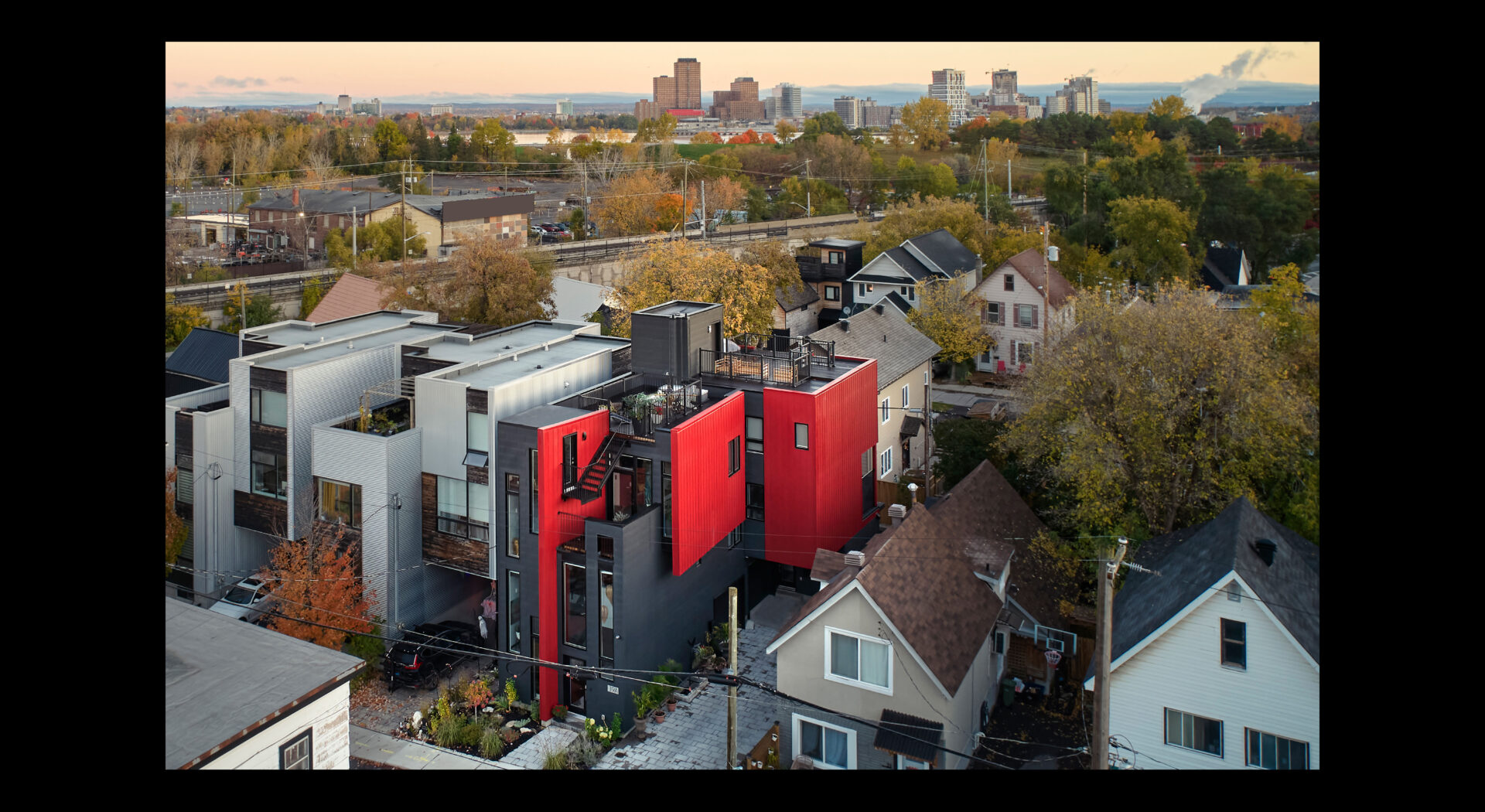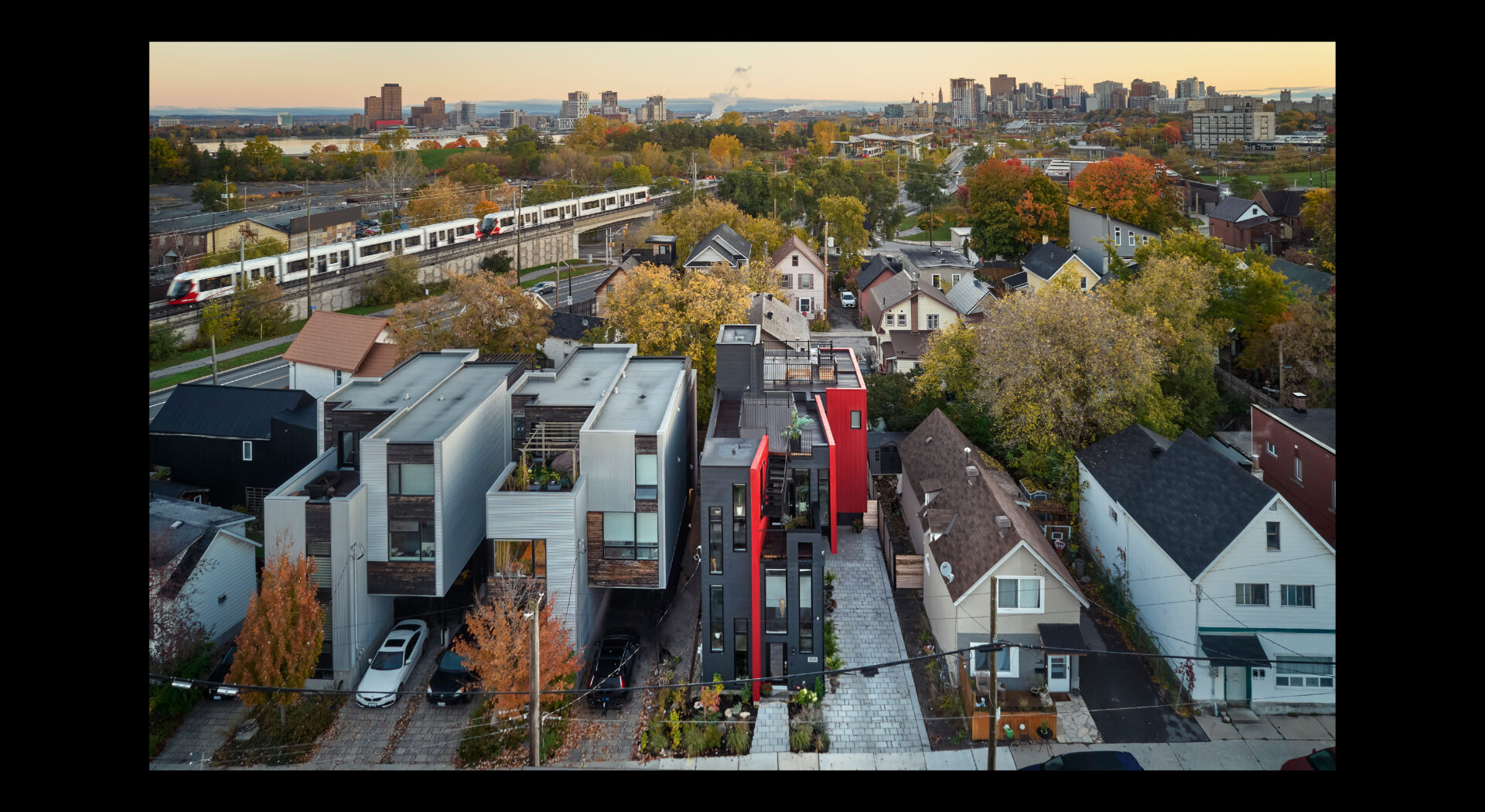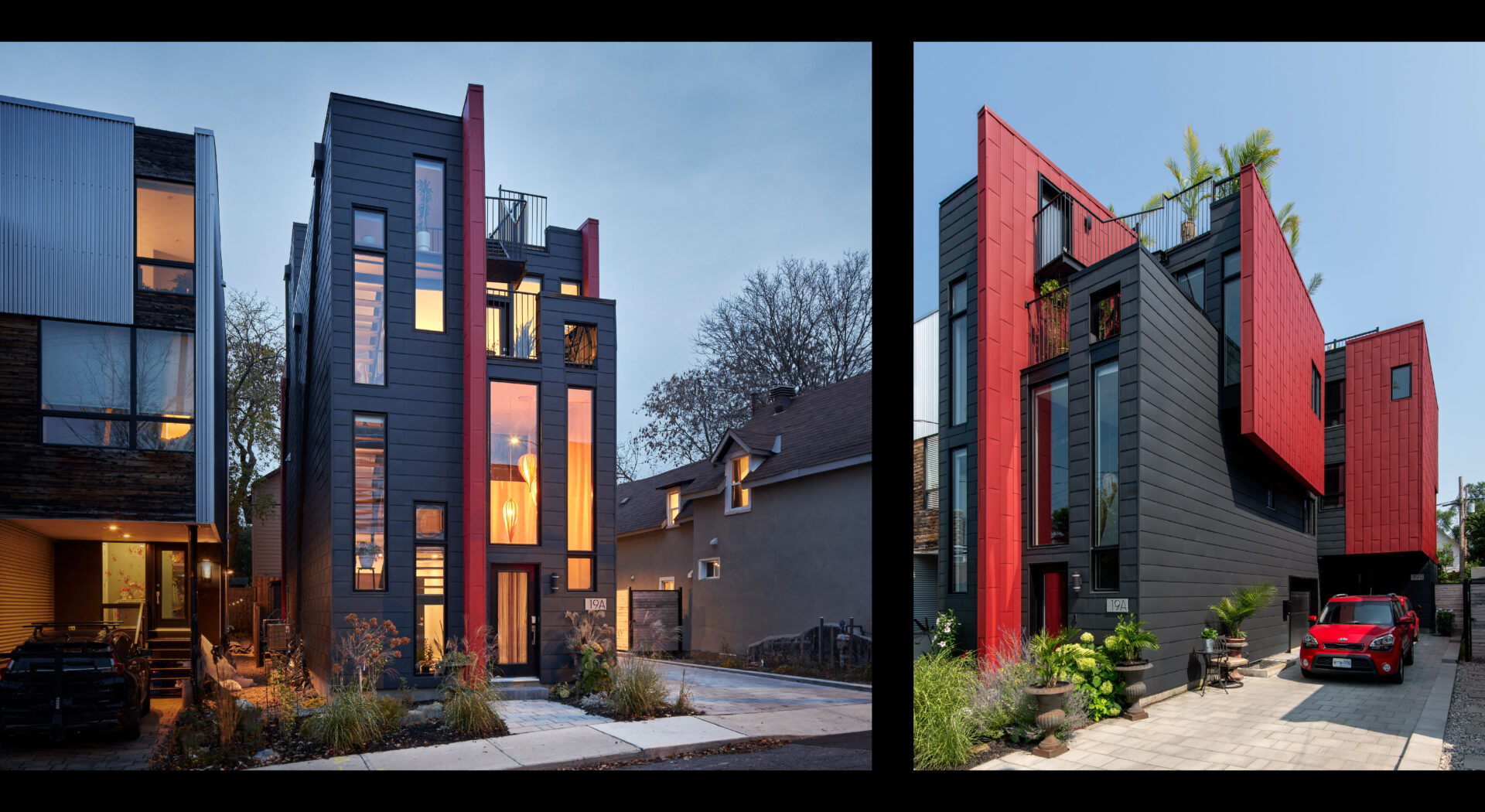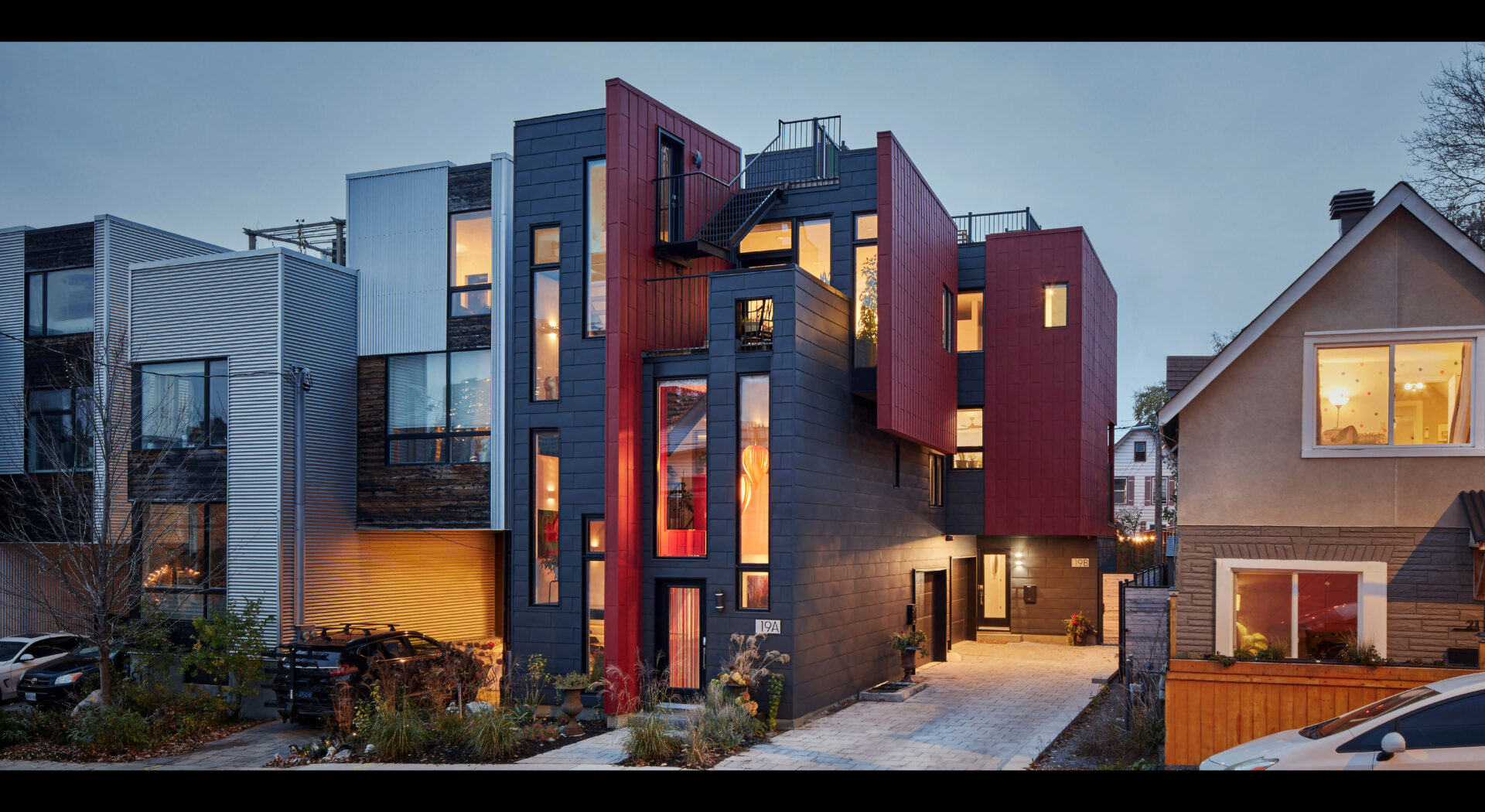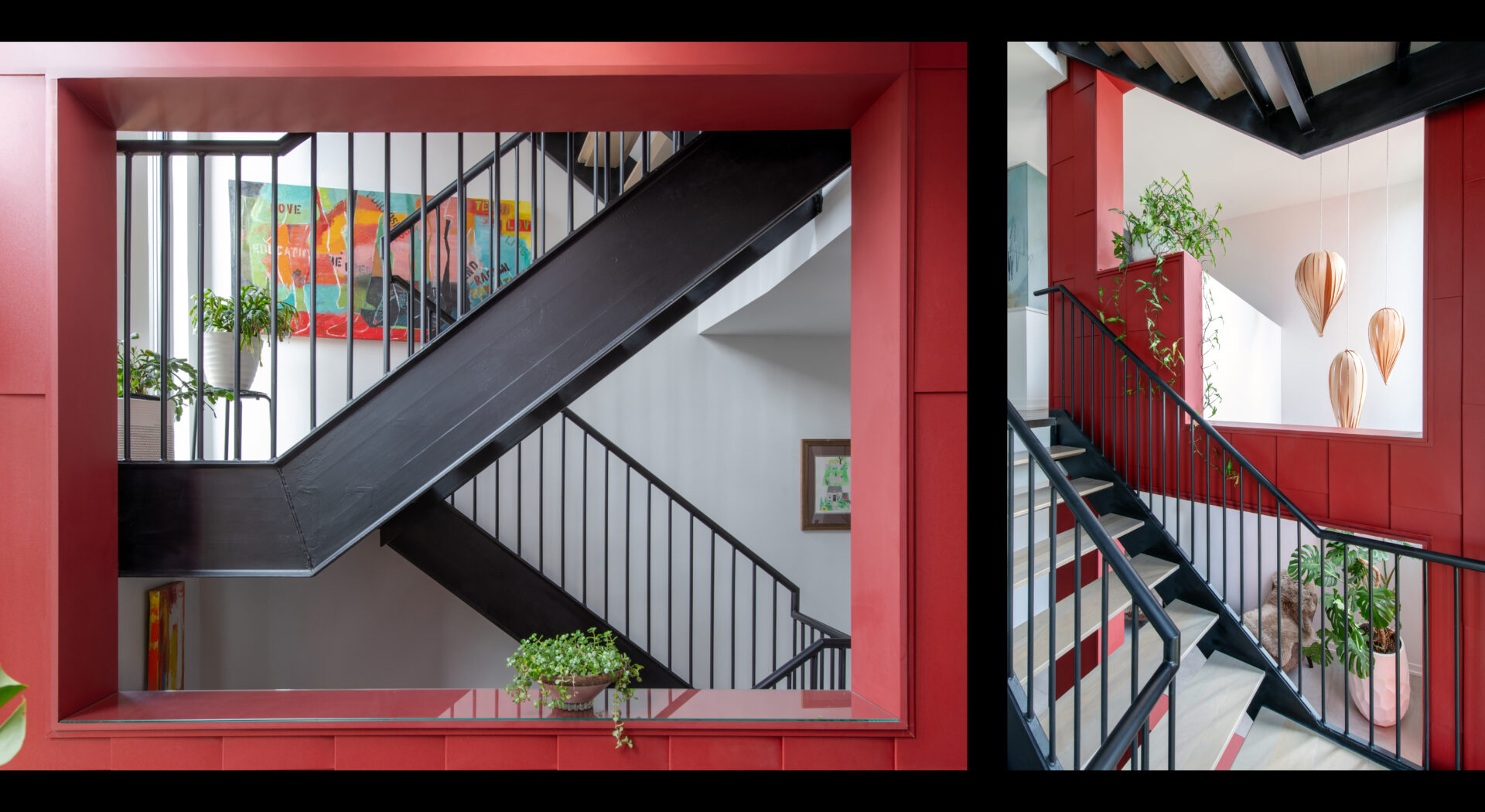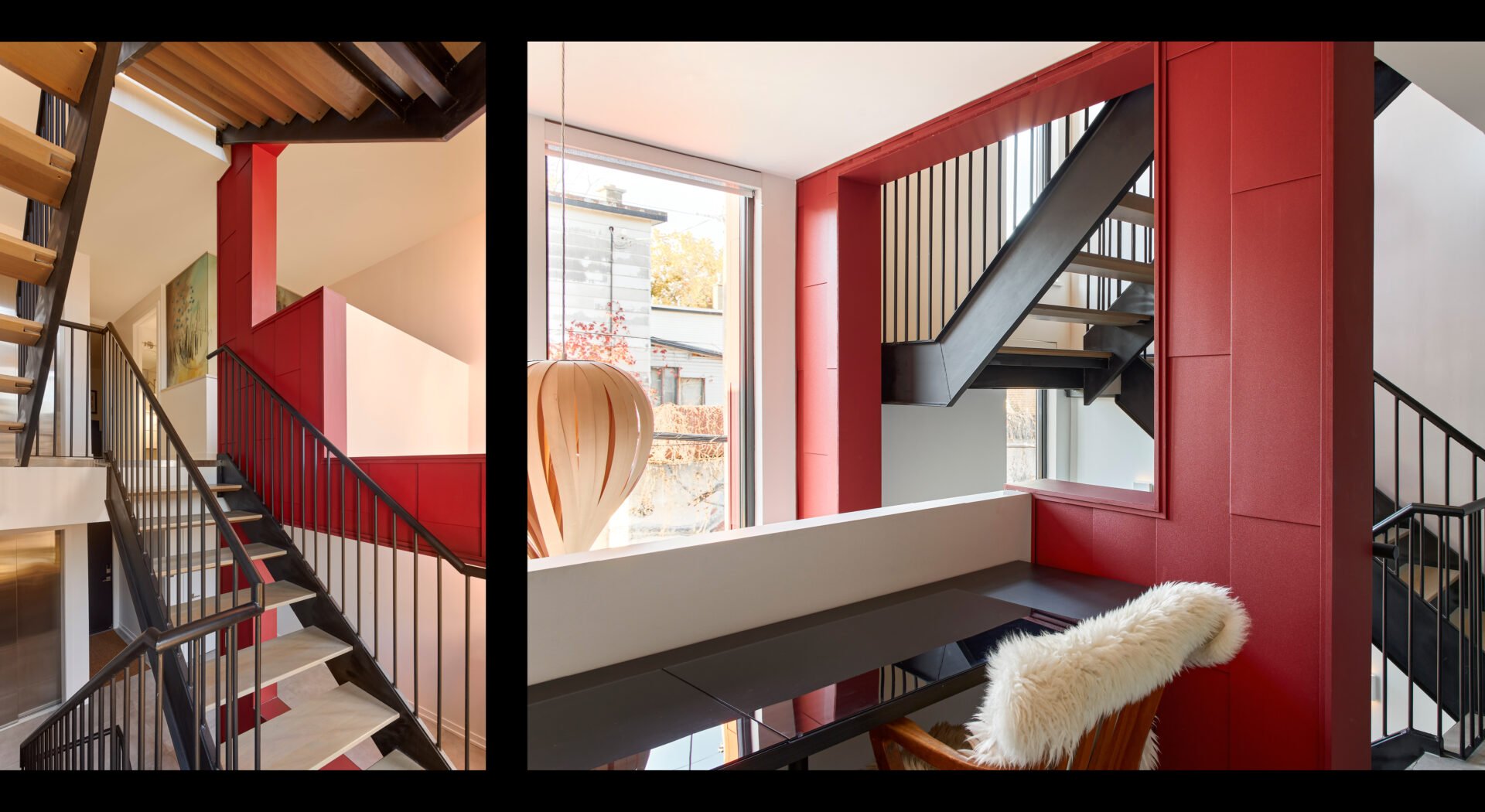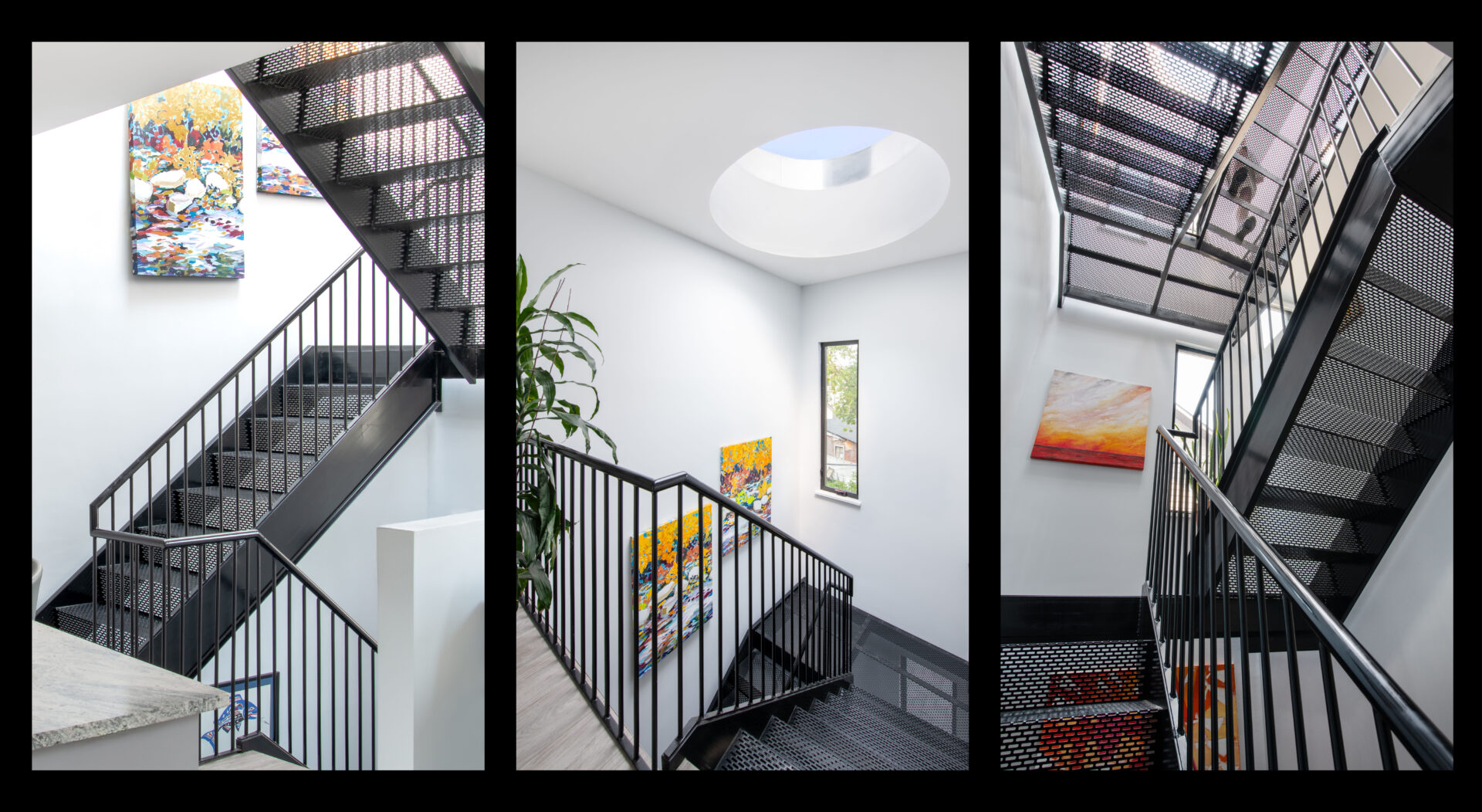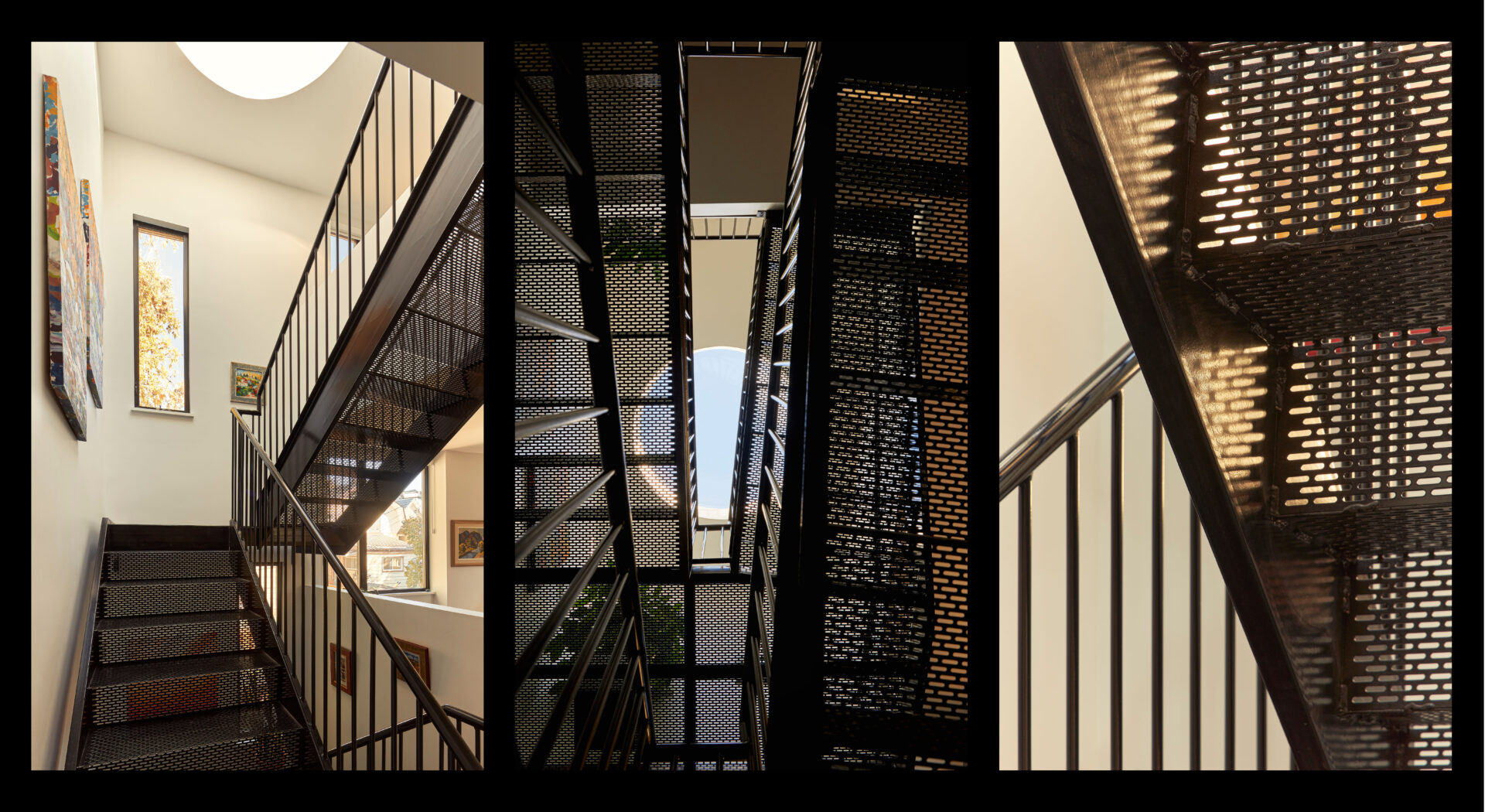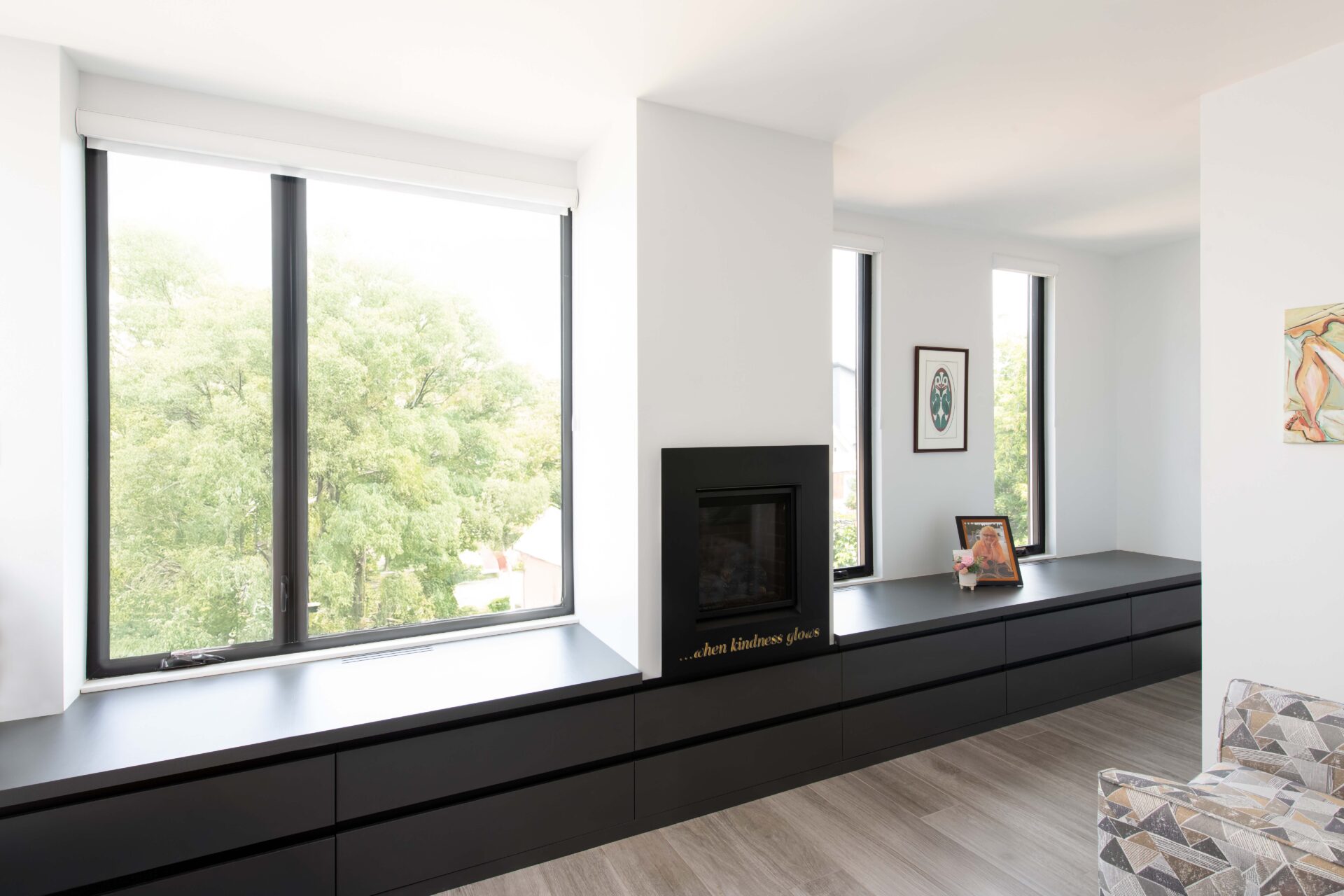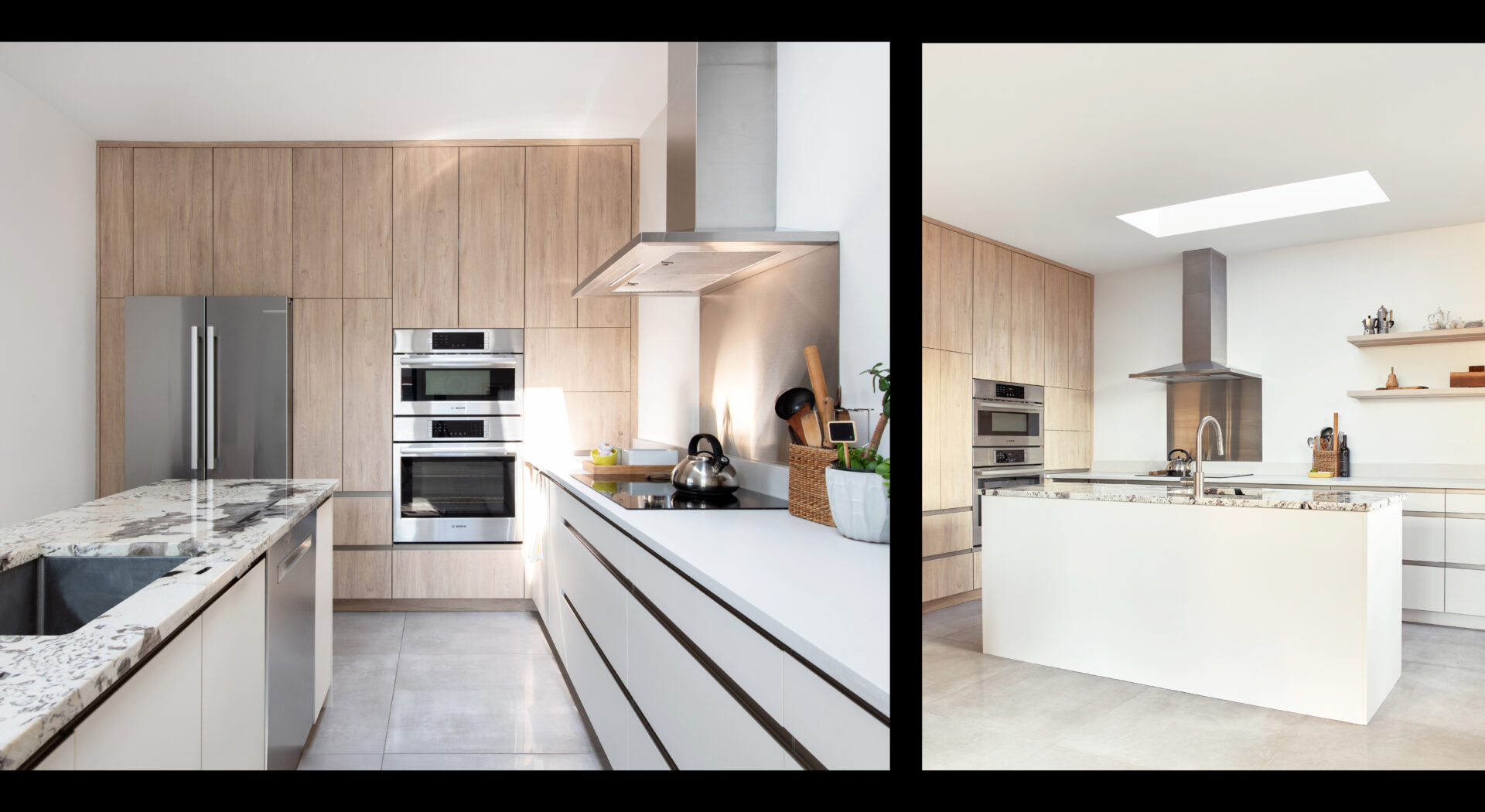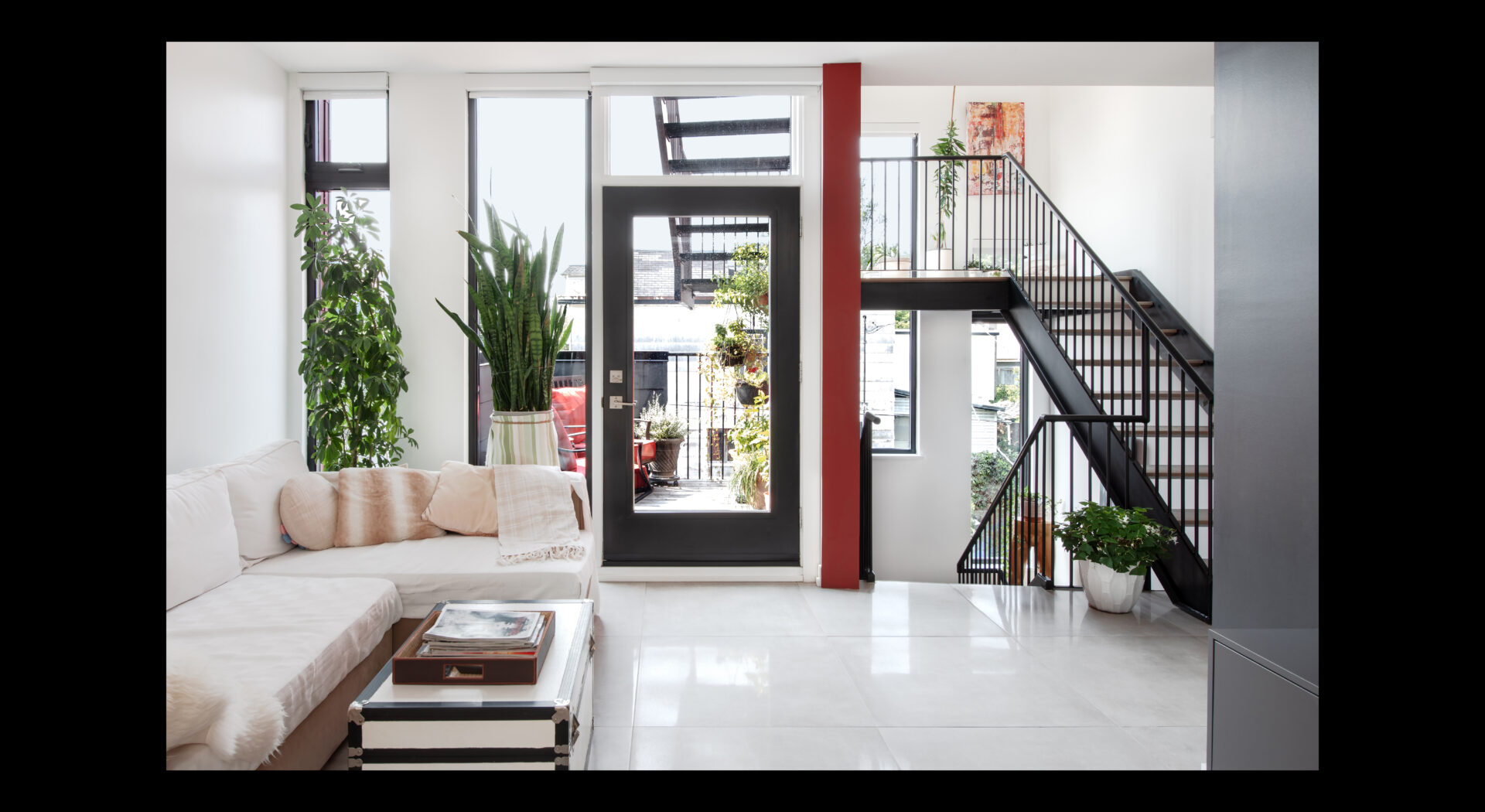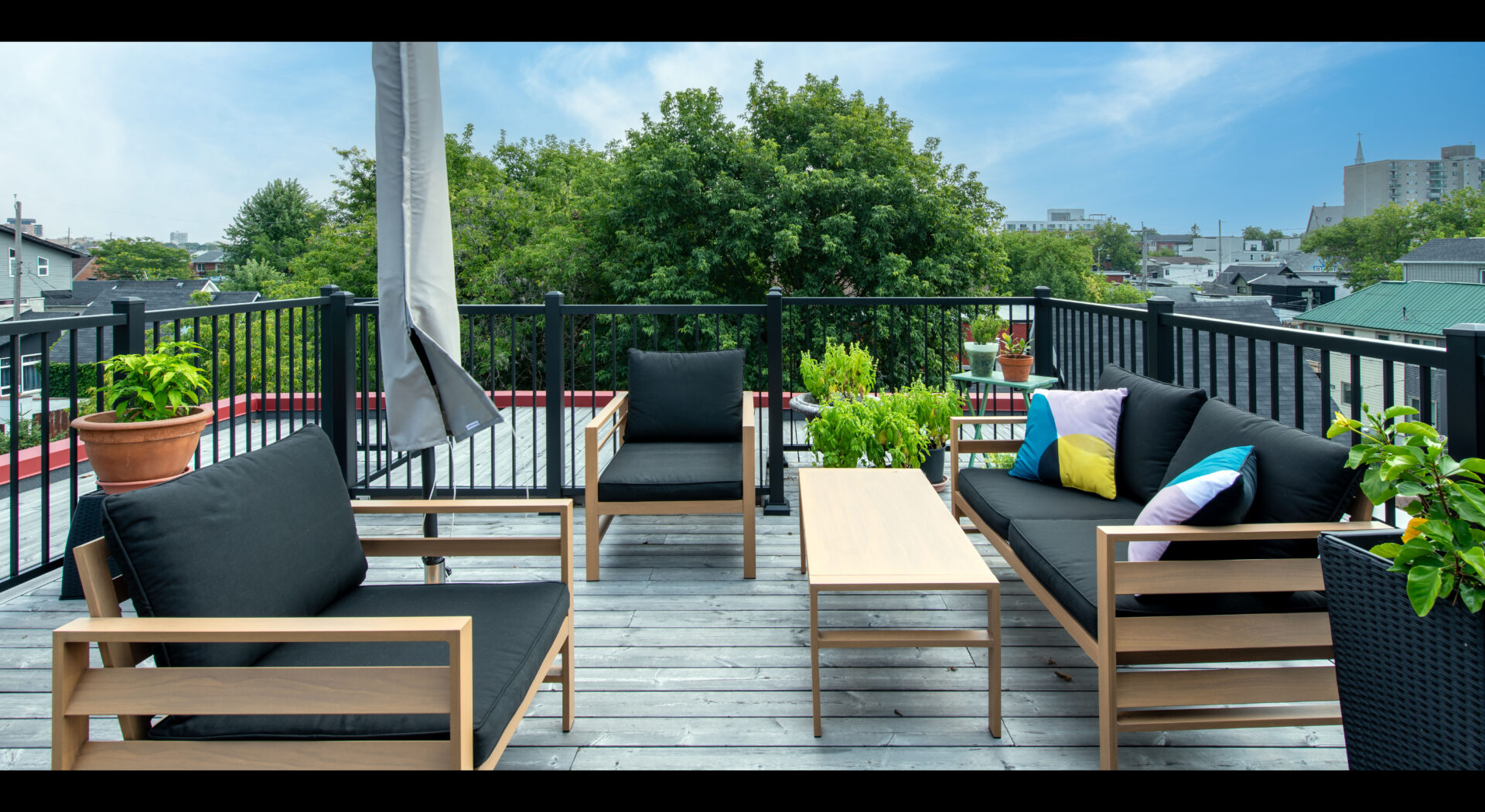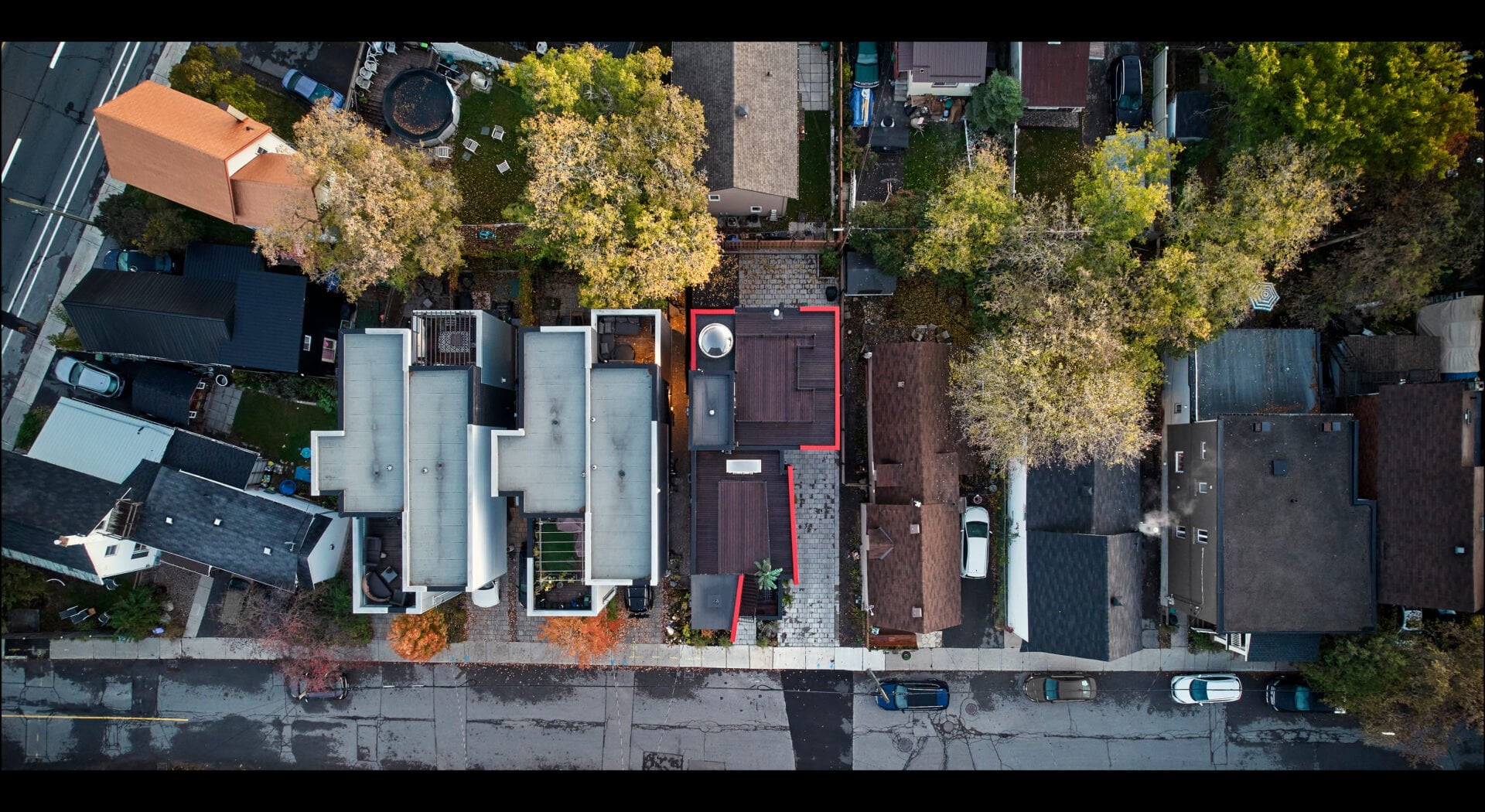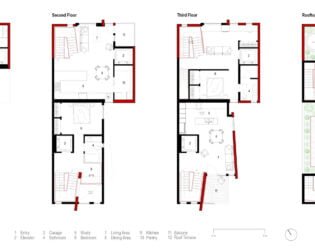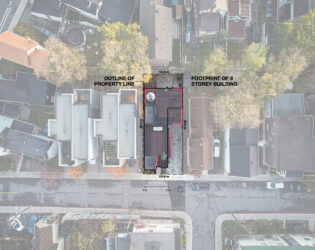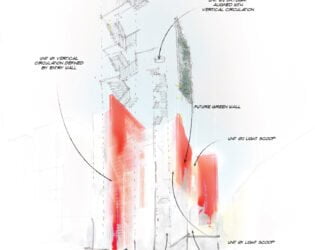Sorelle House
Project details
Two sisters, best friends but with very different personalities, sought to build a home where they could (sort of) live together as they looked forward to their retirement years. Just as good fences make good neighbours, thoughtful home design makes happy siblings. The architectural result of their closeness is a single volume holding two distinct homes, which ultimately join in a roof garden.
The home is located in a historic working-class neighborhood comprised of small wood-framed homes, frequently clad with simple materials and sited on small, odd-shaped parcels. Accommodating the two homes on this site was akin to mastering a Rubik’s Cube.
One sister sought abundant light-filled spaces where she could entertain friends. That home faces the street, soaking in western light, and has an entryway that is framed by a sculptural stair wall clad with the same red steel as the exterior. This gesture of “welcome” draws guests upwards to the public living area on the top floor where it then flows out to a balcony and invites guests to the roof garden.
The home of the other sister (and her husband) faces a secluded garden. It incorporates a large oculus on the roof to draw light inside while ensuring privacy in a densely populated area. Light filters down four levels through perforated metal stairs. In this home, the further one travels upwards the more private the spaces become; the fourth floor is reserved for a bedroom suite and an intimate seating area with a fireplace.
In the popular imagination, great architecture is about large, showstopping buildings. But architecture can also be significant for its humility or the quality of life it enables. We believe that, with dedication and teamwork, great design can be made affordable to people with middle-class incomes — one sister is a social worker and the other a teacher.
Ageing in Place
These homes champion age-based diversity, a topic often ignored in architecture and urban planning. They allow two older citizens to remain in the community they love despite the gentrification which has displaced many of their generation. It shows that instead of walling off seniors in expensive and schedule-driven residences that rob them of their dignity, retirees can age in place affordably and graciously.
To accommodate the residents’ inevitably changing physical abilities, each home is equipped with an elevator that joins upper-level living areas with lower-level suites for potential live-in caretakers.
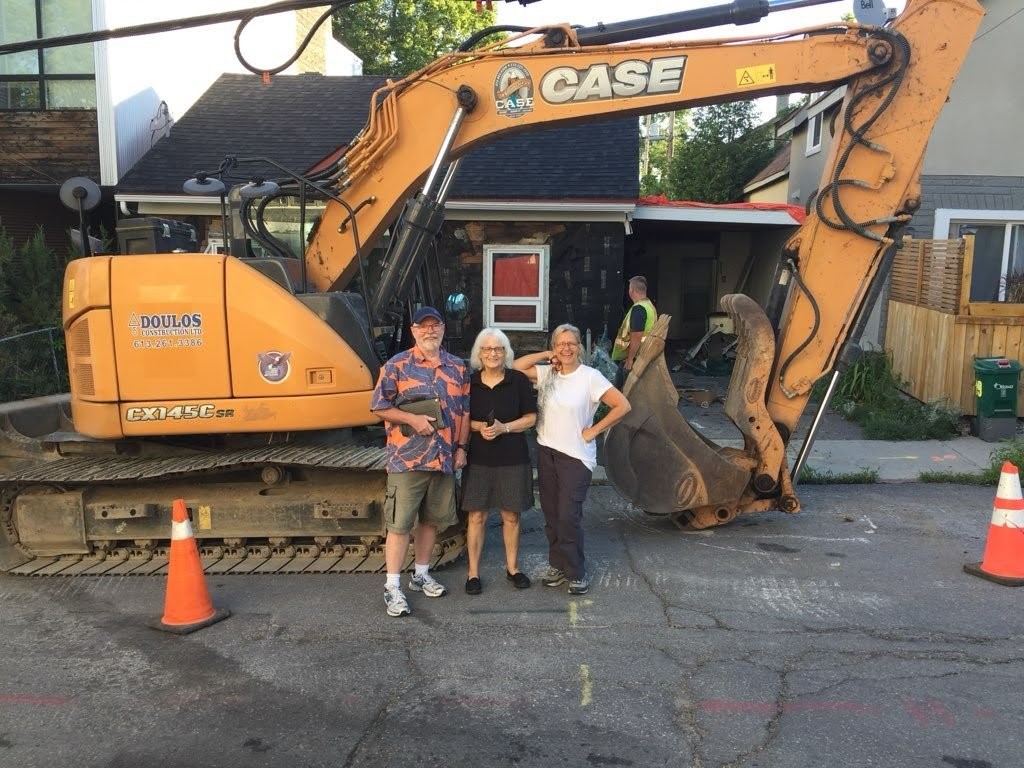
Sustainability
Because it has two homes on one tiny lot, the project increases urban density instead of contributing to urban sprawl, avoiding the destruction of natural habitat. This location also eliminates the need for cars, as the sisters can shop for groceries and socialize in their neighbourhood.
The homes are also more sustainable because they embrace the concept of “living small”, providing a comfortable, practical living space through good design. Smaller buildings use fewer materials in construction and less energy to heat and cool, and result in fewer CO2 emissions throughout their lifespans.
While the project’s budget didn’t allow for the most energy-efficient heating and mechanical systems, passive cooling is used in both units. The continuous vertical cuts within each home, holding the open stairs, operate as heat chimneys to draw fresh cool air in from below and warm air out through the roof-level doors and skylights. This reduces or eliminates the need for air conditioning.
The stairwells are also flooded with light (either from an oculus or numerous windows) and are designed to enable natural light to reach each home’s interior, reducing the need for artificial lighting.
Another approach to sustainability was to increase the homes’ lifespan through the use of quality materials and construction. For example, the highly durable steel shingles not only secure the building envelope but should last for centuries. If the building is ever torn down, these shingles could be reused or recycled.

